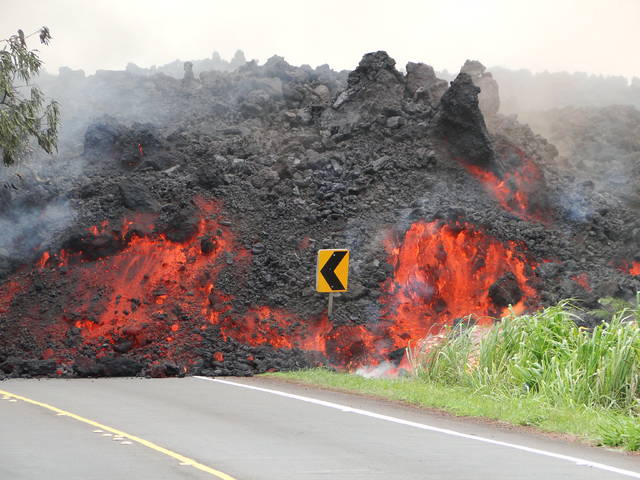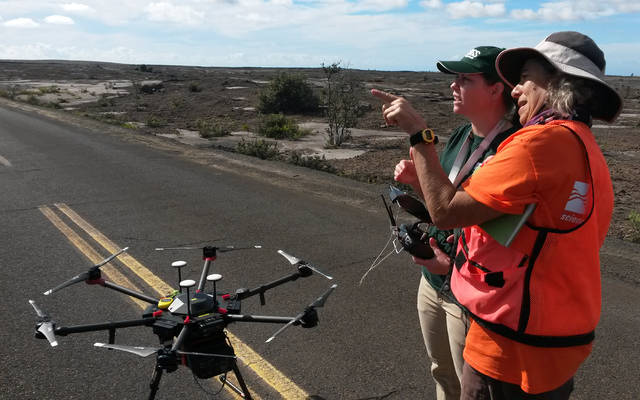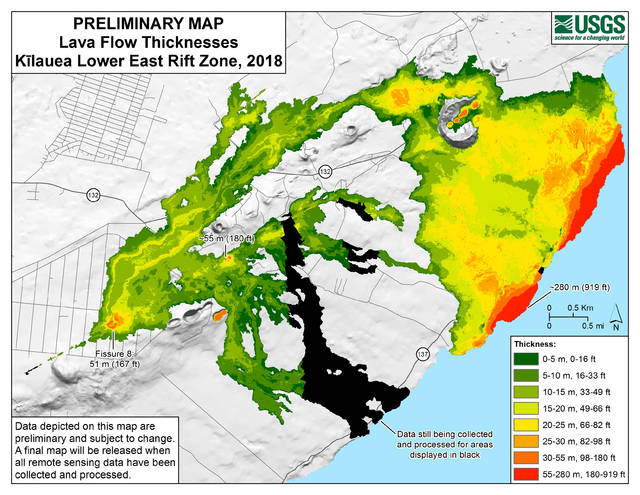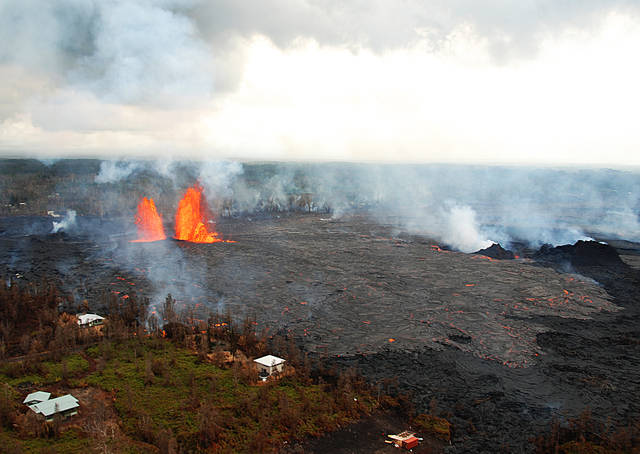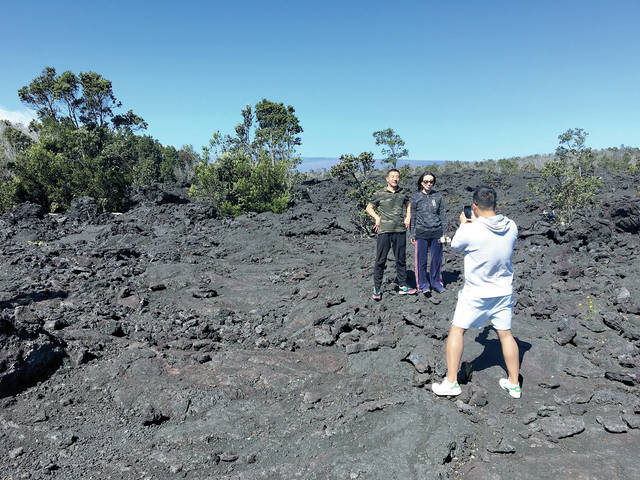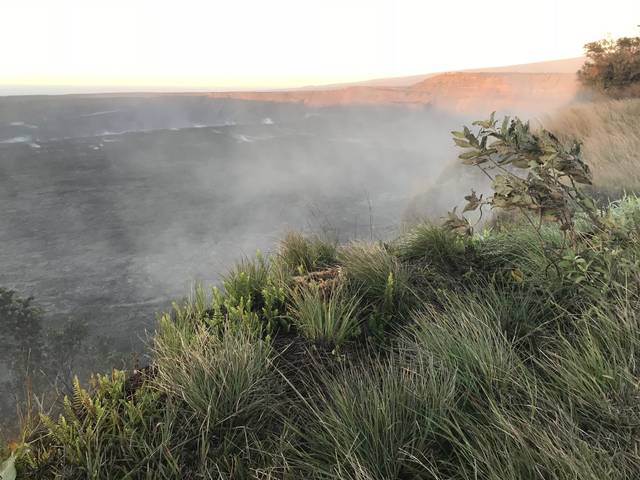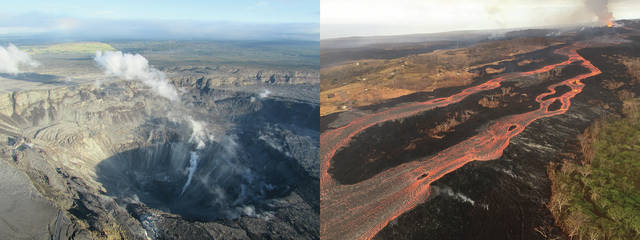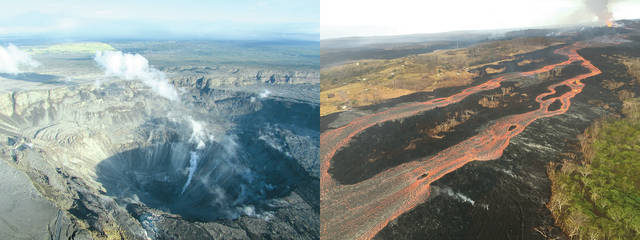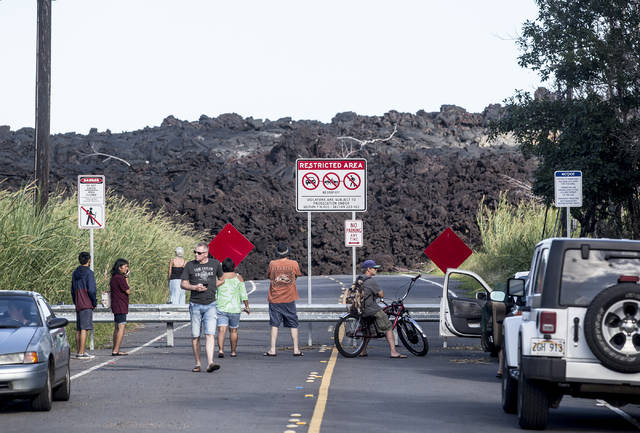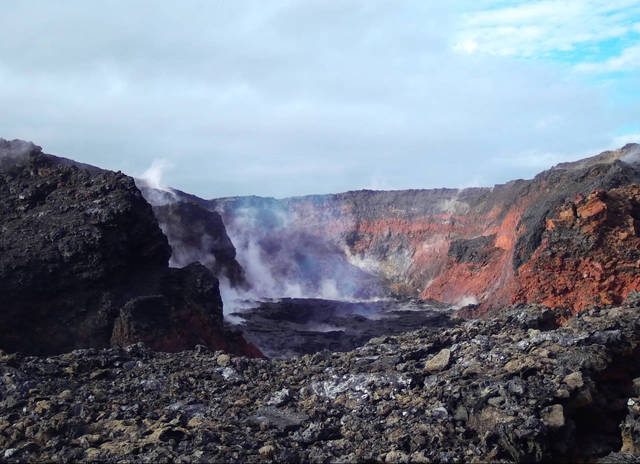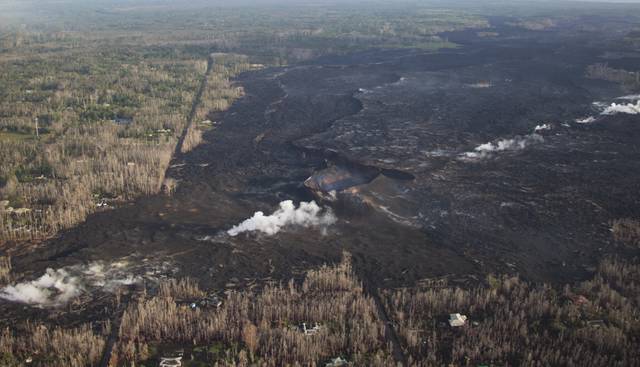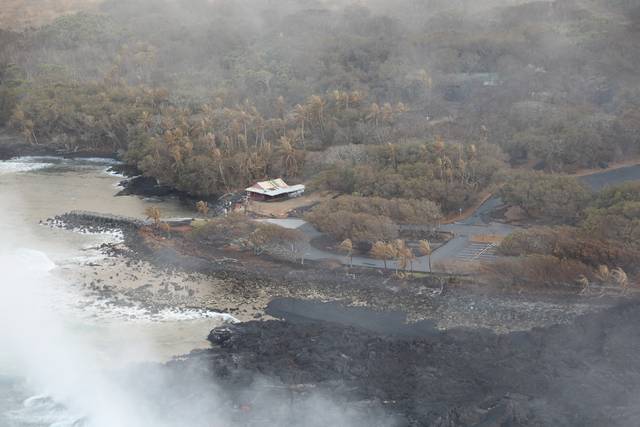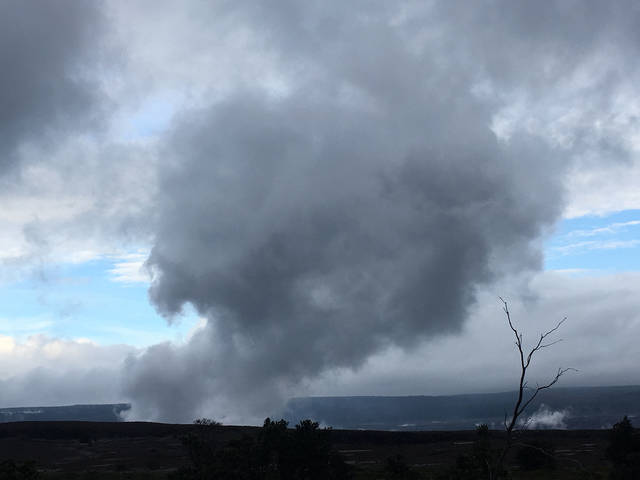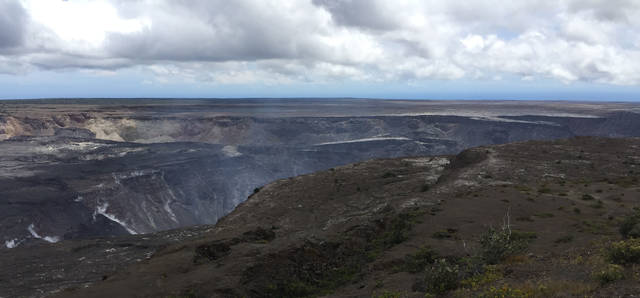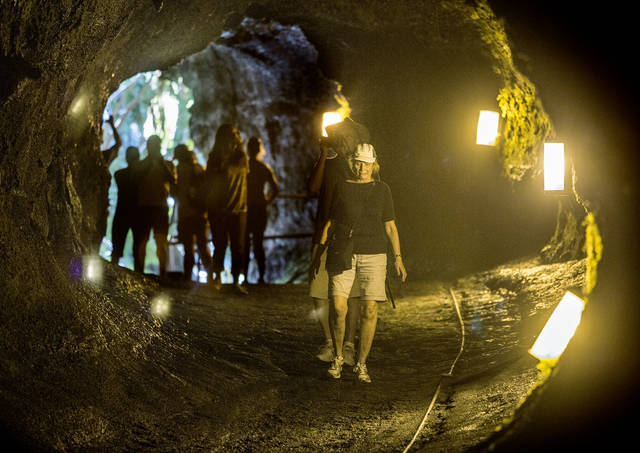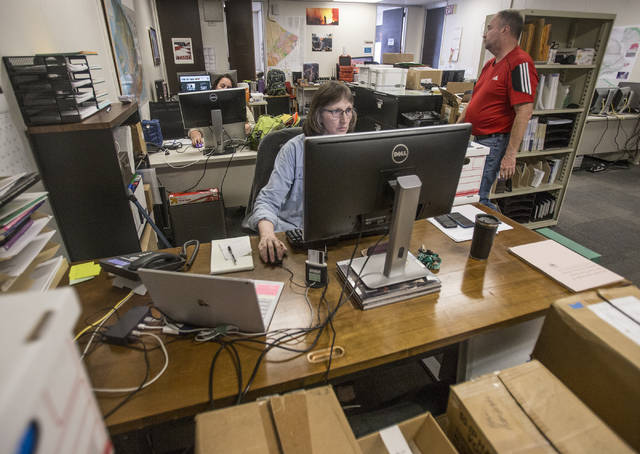Volcano Watch: How do lava flows cool and how long does it take?
Since the end of the 2018 lower East Rift Zone (LERZ) eruption on Kilauea Volcano, questions have surfaced concerning how long it will take for the new lava flows to solidify. This is a difficult question to answer, because the initial eruptive temperatures along with many different factors can influence the rate of cooling.
Low sulfur emissions mean a new focus on a different volcanic gas
VOLCANOES NATIONAL PARK With the end of Kilaueas 2018 lower East Rift Zone eruption, Hawaii Island was able, at long last, to say goodbye to strong vog volcanic smog produced by voluminous sulfur dioxide (SO2) emissions.
Geologists map lava thickness
Geology of the past, how long will the eruption last?
VOLCANOES NATIONAL PARK — The 2018 lower East Rift Zone (LERZ) eruption of Kilauea brought an end to the 35-plus year eruption at Puu Oo. With the draining of the summit and the collapse of Puu Oo, Puna residents were concerned that the eruption in the LERZ could be long-lived.
Seven months of no lava at Puu Oo heralds end of an era
VOLCANOES NATIONAL PARK — One of the most frequent questions asked of USGS Hawaiian Volcano Observatory (HVO) scientists the last several months has been, “Is the Lower East Rift eruption over?” But the same question could – and should – be asked of the Puu Oo eruption.
Hawaii Volcanoes National Park back up and running after government shutdown
Volcano Watch shut down
During the federal government shutdown, the weekly Volcano Watch column is suspended.
8-year-old lava victim sells crafts to aid displaced friend
HILO — Like hundreds of other Big Island residents, Brooklynn Bennett was forced to leave her home when the Kilauea eruption began in lower Puna earlier this year.
Volcano Watch: Trek to the mountain of water
VOLCANOES NATIONAL PARK — The field day begins with a summit weather check at first light. It is a reflective moment at 6:15 a.m. atop Kilauea Volcano, and the fumarole cracks are steaming like the coffee from my thermos. The weather at Halemaumau crater is cool and dry, with light trade winds from the northeast. We hope for these mornings.
Volcano Watch: January is Volcano Awareness Month
VOLCANOES NATIONAL PARK — January 2019 marks the 10th annual “Volcano Awareness Month” on the Island of Hawaii.
Kilauea might enter into lull following voluminous eruption, research article says
HILO — The recent Kilauea eruption produced some staggering numbers, even for a volcano considered one of the world’s most active.
PGV gets green light to clear road
HILO — Puna Geothermal Venture has been given the go-ahead to restore road access to its lava-locked property.
90 days with no lava: A milestone for Kilauea’s 2018 eruption
VOLCANOES NATIONAL PARK — One of the most frequently asked questions of USGS Hawaiian Volcano Observatory (HVO) scientists over the last several months has been, “Is the eruption over?”
Naming process underway for fissure 8
Pahoa Elementary School students visit new lava museum
County reopening popular Puna beach park
HILO — One of lower Puna’s most popular beach parks will officially reopen next week after a six-month-plus closure because of lava.
We’re giving thanks for clean air, but what’s that new smell?
VOLCANOES NATIONAL PARK — We’re giving thanks for clean air, but what’s that new smell?
A summit collapse 150 years ago had similarities to the 2018 collapse
The prolonged yet dramatic partial collapse of Kilauea caldera this past summer was the first to be observed in detail and the largest measured by subsidence volume of more than a dozen summit collapses in the past 200 years.
Thurston Lava Tube likely to remain closed until 2019
HILO — While much of Hawaii Volcanoes National Park has been reopened since its historic closure earlier this year, some parts likely will remain closed until at least next year.

